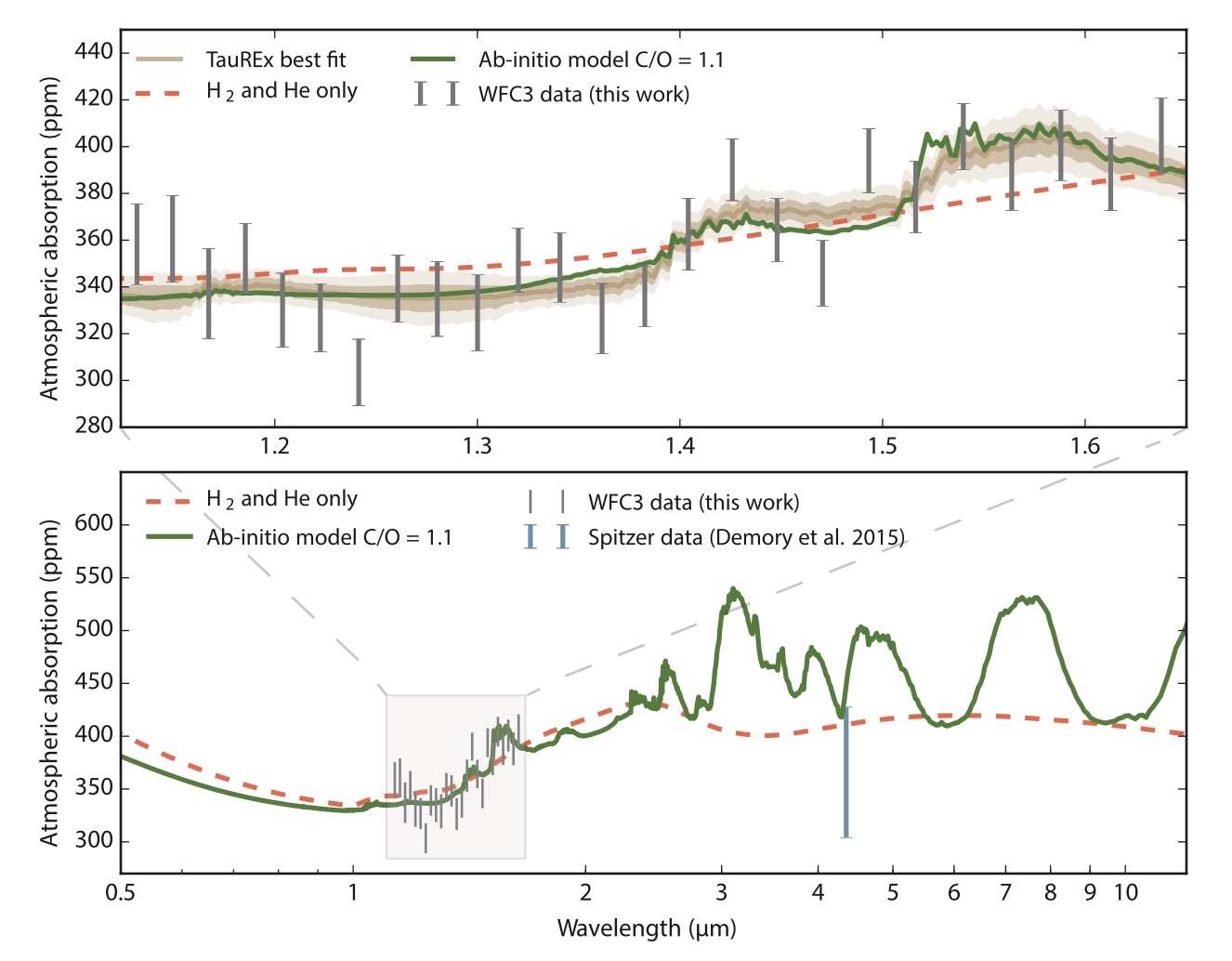55 Cnc e
This was a project last year in which we discovered the first atmosphere of a super-Earth. This is the paper. The exotic exoplanet, 55 Cancri e, is over eight times the mass of Earth and has previously been dubbed the ‘diamond planet’ because models based on its mass and radius have led some astronomers to speculate that its interior is carbon-rich. Using new processing techniques on data from the NASA/ESA Hubble Space Telescope, we were able to examine the atmosphere of 55 Cancri e for the first time and in unprecedented detail. Our analysis of 55 Cancri e’s atmosphere suggests that the planet has managed to cling on to a significant amount of hydrogen and helium from the nebula from which it formed.
Super-Earths are thought to be the most common planetary type in our galaxy and are so-called because they have a mass larger than Earth but are still much smaller than the gas giants in the Solar System. The Wide Field Camera 3 (WFC3) on Hubble has already been used to probe the atmosphere of two super-Earths, but no spectral features were found in these previous studies.

55 Cancri e has a year that lasts 18 hours and temperatures on the surface are thought to reach around 2000 degrees Celsius. The planet is located in a solar system around 55 Cancri, a star in the Cancer constellation that is around 40 light-years from Earth. Because 55 Cancri is such a bright star, the team were able to use new analysis techniques to extract information about its planetary companion.
Observations were made by scanning WFC3 very quickly across the star to create a number of spectra. By combining these observations and processing through computer analytic ‘pipeline’ software, we were able to retrieve the spectral fingerprints of 55 Cancri e embedded in the starlight.
Intriguingly, the data also hinted at a signature for hydrogen cyanide, a marker for carbon-rich atmospheres. This is shown in the figure on the left. The green model is consistent with a carbon-rich hydrogen-cyanide (or Prussic acid) atmosphere. The grey bars are the data. Now current observations are only suggestive of HCN. To be absolutely sure, we need to investigate the atmosphere at longer (redder) wavelengths. This is something the James Webb Space Telescope or the ARIEL mission will be able to do with ease.
The top picture was taken from our press release and shows an artist impression of 55 Cnc e orbiting its star. The figure is from our paper.
